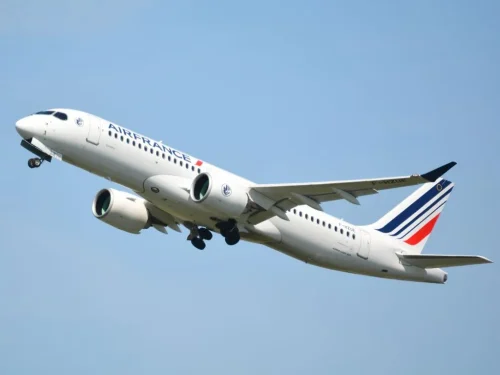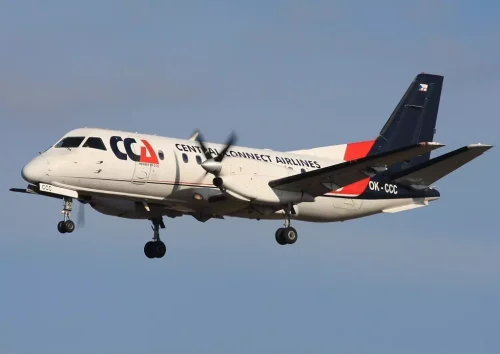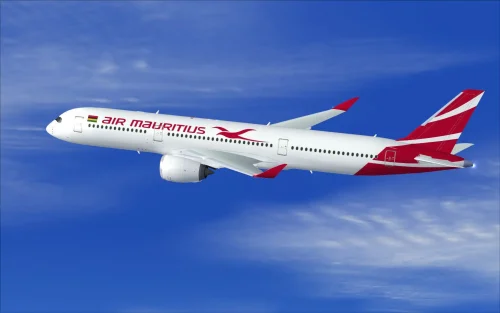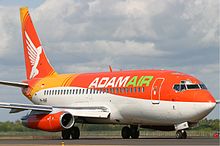Official Information on Aeroperu Airlines in Peru
Aeroperu is one of the prominent airlines in the history of Peruvian aviation, playing a significant role in connecting different cities. The company is known for its diverse fleet and customer-focused services, demonstrating their commitment to enhancing passenger experience.
Due to financial failures and operational challenges, Aeroperu eventually ceased operations in 1999, but its legacy still lingers in the Peruvian aviation industry.
History of Aeroperu
Aeroperu was one of Peru’s leading airlines, founded in 1973. It was recognized as the main carrier in Peru, playing a significant role in connecting various cities within the country. Over the years, Aeroperu expanded its fleet to provide more services and cover a wider range of routes.
Over time, Aeroperu managed to maintain its position in the competitive market, becoming one of the most reputable airlines in the region. However, financial and operational challenges eventually led to the closure of the company in 1999.
Aeroperu Aircraft Fleet
Aeroperu’s fleet comprised various aircraft types that contributed to providing reliable and safe services to passengers. The airline utilized aircraft like Boeing 727 and 757, which performed well in both domestic and international flights.
In addition to the diversity of aircraft, Aeroperu invested in modern technologies to enhance passenger experience. The use of advanced navigation systems and safety protocols demonstrated the company’s commitment to providing high-quality services.
Destinations and Routes of Aeroperu
With extensive route coverage, Aeroperu played an important role in facilitating travel for passengers both within Peru and to other countries in South and North America. The airline offered flights to major cities like Lima, Cusco, and other strategic internal destinations.
In the international sector, Aeroperu flew to destinations in the United States, Brazil, and other Latin countries. These international connections facilitated greater cultural and economic ties between Peru and other nations.
Services Offered by Aeroperu
Aeroperu provided a variety of services to its passengers, including high-quality flight services, welcoming hospitality, and enhancing the travel experience. Diverse meals and hospitable services were among the company’s distinguishing features.
Customer support was also a priority for Aeroperu. Support teams were committed to meeting passengers’ needs at every stage of travel, from booking tickets to reaching the final destination.
Legacy of Aeroperu
Although Aeroperu is no longer active, its legacy in Peru’s aviation industry remains alive. The company set high standards in safety, services, and national connections, influencing subsequent companies.
Moreover, Aeroperu was a symbol of national pride for Peru, showcasing the country’s rich culture and heritage to the world by flying the Peruvian flag worldwide.
Impact of Aeroperu on Peruvian Aviation
Aeroperu played a significant role in the development of Peru’s aviation industry. By establishing a wide flight network, the company increased access to different parts of the country and played an important role in facilitating trade and tourism.
Infrastructure development and training of specialized human resources were other positive impacts of Aeroperu on Peru’s aviation industry.
Aeroperu Ground Services
Besides flight services, Aeroperu also offered diversified ground services, including the unloading and loading of cargo, passenger transit services, and special facilities for individuals with specific needs.
Providing leisure facilities at airports and collaborating with local companies were other aspects of the company’s ground services.
Challenges and Cease of Operations of Aeroperu
In the 1990s, Aeroperu faced serious financial challenges that eventually led to the cessation of operations in 1999. Increased competition, economic troubles, and unfortunate flight incidents were the primary factors in this downfall.
Nevertheless, Aeroperu’s legacy remains in the minds of Peruvians and is remembered as a significant step in the country’s aviation history.
Sustainability and Future of Aeroperu
Although Aeroperu is no longer active, its impact on current Peruvian airlines is still palpable. Emerging companies can learn valuable lessons from Aeroperu’s experiences in management and providing better services.
There have been discussions about reviving Aeroperu in the future; however, no official actions have been taken to resume the company’s activities so far.
Frequently Asked Questions
- How was the AeroPeru logo designed, and what are its features?
- The AeroPeru logo consists of an abstract symbol with two semicircles and a dark red color, referring to the Peruvian flag. This design links the past and present, symbolizing national pride and corporate identity.
- What is the cultural significance of the Nazca Lines in the AeroPeru logo?
- The Nazca Lines, ancient Peruvian geoglyphs, are deeply entrenched cultural symbols included in the AeroPeru logo, celebrating Peru’s rich heritage and historical connection to the skies.
- Where are the Nazca Lines geoglyphs located and why are they famous?
- The Nazca Lines geoglyphs are located in Peru and are considered one of the country’s notable and famous icons due to their mysterious shapes visible only from the air.
- When did Aeroperu operate, and where was it headquartered?
- Aeroperu, Peru’s national airline, operated from 1973 to 1999 with headquarters in Lima.
- How did Aeroperu become the flag carrier of Peru?
- Aeroperu was established as a subsidiary of Aeroméxico and gradually became Peru’s national flag carrier, representing national identity in aviation.
- How many destinations did Aeroperu have domestically and internationally?
- Aeroperu had an extensive network with over 30 domestic destinations within Peru and international routes across South America and the United States.
- What led to the shutdown of Aeroperu in 1999?
- Insufficient financial resources and involvement in several major incidents, including the crash of flight 603 in 1996, were key factors in Aeroperu’s shutdown in 1999.
- What was the tragic incident of Aeroperu flight 603?
- Aeroperu flight 603 crashed in 1996 due to technical failures and human errors, resulting in the death of all passengers and crew, significantly contributing to the airline’s downfall.
- How did the early AeroPeru logos reflect the company’s identity?
- The early logos featured symbols like a rising sun, depicting hope and new beginnings, reflecting the company’s role and history in Peru.
- How has the design of the AeroPeru logo changed over time?
- As AeroPeru evolved, its logos were updated and adopted a modern look to align with contemporary aviation approaches.
- What is the connection between the new symbol designed in 2012 for AeroPeru and Peruvian cultural heritage?
- The new symbol with two semicircles and dark red color refers to the national flag and embodies Peruvian cultural heritage, steering toward a brighter future.
- What replaced Aeroperu after its shutdown?
- Following Aeroperu’s shutdown, LATAM Airlines Peru, formerly known as LAN Perú, continued operations as the national flag carrier.
- What were the primary causes of Aeroperu’s collapse?
- The primary causes of Aeroperu’s collapse included financial issues and involvement in severe aviation accidents like the crash of flight 603 due to technical failures and human errors.
- Did Aeroperu impact the aviation industry in Peru?
- Yes, Aeroperu played a significant role in the development and growth of the aviation industry in Peru, leaving a notable impact until its shutdown.
- How does the AeroPeru logo design connect the past and present?
- The AeroPeru logo design utilizes ancient elements of the Nazca Lines and modern symbols to establish a connection between historical traditions and contemporary aviation technologies.
- What does the abstract symbol in the new AeroPeru logo reference?
- The abstract symbol with two semicircles and dark red color references the Peruvian flag, symbolizing the company’s linkage between history and future.
- How has AeroPeru reflected Peruvian cultural heritage in its design?
- AeroPeru has showcased Peruvian cultural heritage in a modern way in its logo by incorporating the Nazca Lines and colors associated with the national flag.
- How can one contact Iran Charter?
- To contact Iran Charter, you can call 02191091190 or send an email to info@irancharter.ir.












